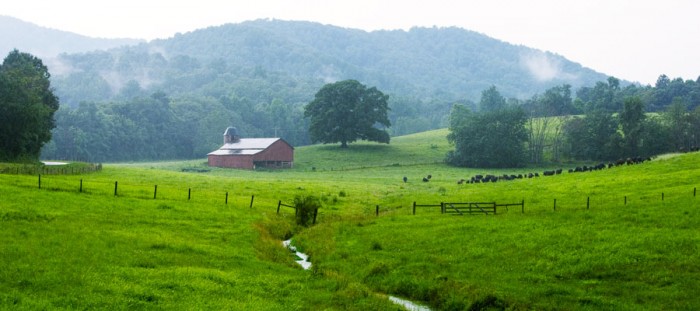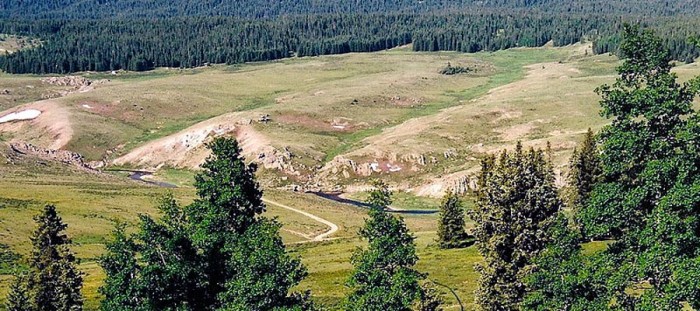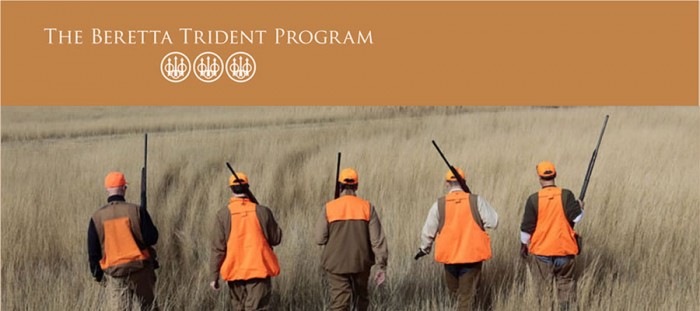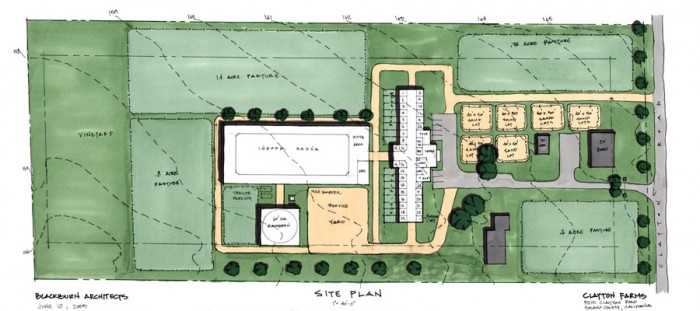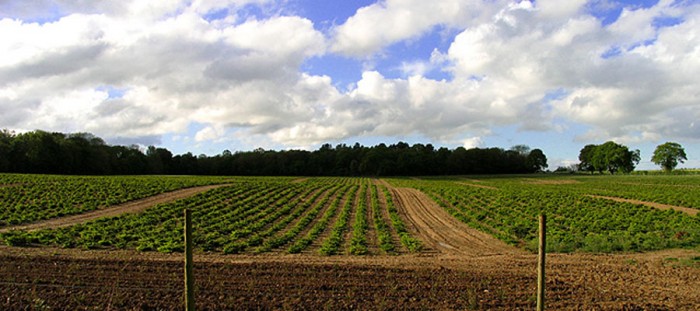One of our affiliates, Trout Headwaters, just put out another video that you should definitely check out. If you’re not familiar with their services, or if you’d like to learn more about how they can help you emphasize and protect the water resources on your property, click on the play button above.
Enjoy!
We recently came across this article in Plateau Land & Wildlife’s most recent newsletter, “Seasons.” Written by Shane Kiefer, Plateau’s Senior Wildlife Biologist, it lays out the case for redefining the “perfect lawn” as something other than the manicured, monoculture turf expanse so popular today. We would love to hear what you think of when you imagine the perfect lawn.
From Shane:
Last year I wrote about the silver lining of natural disturbances with a focus on the wildfires that were so prevalent at the time. Natural disturbances are an important part of the natural world. They remind us that nature never stands still.
In particular, I mentioned the positive side effects of drought that appear when favorable conditions return, and the recent winter rains are giving us a good demonstration of those beneficial outcomes. The drought set the stage for those fires, which are a natural part of most ecosystems in Texas, but drought also reduces decadent plant growth, even without fire. That built up plant material dries up and breaks down (and blows away) or is consumed by foraging animals as a consequence of not having any fresh growth on which to feed.
By opening up bare ground, this encourages a flush of annual forbs and other weedy species when the rains return (which they have for now) that doves, deer, quail, Wild Turkeys, seed-eating songbirds, butterflies, bees, and many other species rely upon. Look at how many spring weeds you have in your yard right now after last year’s watering restrictions. While my neighbors may not appreciate it, my yard is an excellent demonstration of an early successional plant community that many types of wildlife relish.
This explosion of new growth also results in a boom in insects and arthropods that are essential to nesting birds, reptiles, amphibians, etc. The plants are the core of the food web and insects are an important part of its structural integrity.
The lesson here is that the flora and fauna, and ecosystems that they comprise in Texas are built to withstand drought and other disturbances. The healthier and better managed your land is, the better equipped they are to do just that. So this spring, tell your neighbors that your yard is an experiment in ecological succession for the benefit of wildlife, and take delight in the weeds, forbs, wildflowers, or whatever you prefer to call them. The wildlife certainly will. And if you feel like learning more about the names of all those weeds on your property, call Plateau- we will be happy to take you on a walk.
[Note: This is Part Two of a two-part series investigating the economic potential for investing in the management of land, wildlife, biodiversity, and water resources. Part One covered economic incentives from government programs for establishing conservation practices, and can be viewed here. Part Two addresses private sources of revenue that can be generated from establishing creative and multi-use land use practices and programming.]
Wal-Mart is not often celebrated as a leader in the environmental movement (though if you analyze its most recent efforts to green its operations, perhaps it is moving in the right direction). Nonetheless, Wal-Mart’s former CEO, Lee Scott, had it right when he stated in 2005, “Being a good steward of the environment and of our communities, and being an efficient and profitable business are not mutually exclusive. In fact, they are one and the same.”
As landowners are faced with innumerable questions about how to derive the most satisfaction from their land, this is a quote that should come readily to mind. Indeed, as more and more landowners are finding, instituting conservation-oriented practices has become a wildly lucrative option. It should come as no surprise, then, that despite the catastrophic effects of the Great Recession, land trusts have conserved over 10 million acres nationwide in the past five years, according to the national Land Trust Alliance.
For many landowners, however, the prospect of giving up any level of control over their land, whether through easements or enrolling in public programs, is not an attractive option. And for others, the tax benefits and annual payments may not cover their expenses. Luckily, for both of these groups, an incredible number of opportunities exists for generating revenue from instituting conservation-oriented practices.

Investing in outdoor recreation is one of these opportunities. In the Commonwealth of Virginia, hunting and fishing generate a combined $2.7 billion in economic activity each year. By consciously managing the land in order to promote the growth and preservation of wildlife habitat, clean water, and healthy populations of targeted species, landowners can position themselves to benefit from such economic activity through access permits and the like. By further investing in amenities like shooting stands and blinds, boating docks, and even guest lodging, landowners can establish their property as a prime destination for sporting enthusiasts.
Consider The Fork Farm & Stables in Stanly County, NC for example. When Jim Cogdell purchased the property in 1999, he did so with the intent of renewing, conserving, and preserving the natural beauty of the land. Having committed to land and wildlife conservation while still operating the property as a working farm, Cogdell has established The Fork as a premiere sporting destination, with amenities including shooting facilities, fishing, equestrian facilities and trails, hiking and biking trails, golf, and outdoor education programming.
For those not interested in visitor fees as a source of revenue, another option to consider is the monetization of ecosystem services. As requirements for protecting stormwater quality and quantity, air pollution, and biodiversity continue to become ever more stringent, developers, localities, and corporations are searching high and low for ways to offset the environmental impacts of their activities. Indeed, according to the Ecosystem Marketplace, wetland mitigation credits prices range anywhere from $3,000 to $600,000 per acre of wetland, with the prices rising every year. On a broader scale, the wetland mitigation market, biodiversity markets, and forest carbon markets are all setting new records each year.
Though the sale of these credits typically requires fairly large, continuous tracts of lands, opportunities do exist for landowners of smaller properties to benefit financially from the ecosystem services on their lands. In 2004, the Blue Ridge Forest Cooperative was formed as a method for giving smaller timberland owners from North Carolina, Tennessee, Virginia, and West Virginia greater access to local and national timber markets. The Cooperative has been immensely successful and has enabled its members to sell over 12 different wood products to markets they had not previously had access to. Further, in an effort to realize the full value of the members’ lands, the Cooperative is laying the groundwork for entering the markets for carbon and stream restoration credits.
If generating revenue from ecosystem services doesn’t suit a landowner’s fancy, he or she can always consider a residential development. More specifically, a conservation community. Conservation communities are residential developments that, logically, are designed with a central focus on conserving the land in order to maintain its rural character. Housing sites are chosen with an eye toward taking advantage of views without being visible themselves. Roads and driveways are designed to be as unobtrusive as possible. And stormwater is managed through low impact development rather than through traditional drains and pipes. When properly designed, conservation communities provide residential options while simultaneously minimizing the impact on the land.
Bundoran Farm serves as a prime example of just such a development. Located on 2,300 acres, this area was designed to function in harmony with a working farm while providing 102 home sites, each ranging in size from 2 to 150 acres for a total disturbance of only 20% of the original property. The construction costs for the development were significantly reduced compared with traditional residential developments due to reduced road widths and the use of vegetated swales rather than traditional curbs and gutters. As a result of the efforts to preserve the land and provide a high quality of life for residents, the development’s stakeholders have enjoyed increased property prices, with lots selling for between $250,000 and over $1 million.
The potential financial benefits of investing in conservation are clear. Whether a landowner chooses to solicit public or private sources of funding, they have a wide range of options from which to choose. In many cases, the best approach can even involve generating revenue from both sets of funding sources. For example, a landowner can receive cost-sharing payments for protecting wildlife habitat and then can sell hunting permits to those wishing to access that habitat. Regardless of the approach taken by a landowner, ensuring the economic viability of his or her land is a key step in achieving genuine sustainability. As Verilyn Klinkenbord, author of Crossing Borders: Good News from the Badlands, wrote, “Many have said, ‘The land must be productive.’ By saying this, they aren’t just articulating an old-fashioned view about man’s dominance over nature. They are arguing for what one neighbor calls ‘working wilderness.’ They are saying that unless there is some economic return to the land, there is no defense at all against the pressures of development, which are spiraling outward from nearly every city and small town in the West.”
This post comes from our affiliate, John Blackburn of Blackburn Architects.
“The largest competitors at this summer’s Olympics in London are not weightlifters….the largest competitors are horses.” — Morning Edition, NPR, March 7, 2012
Who knew that horses could arrive via FedEx? What a great story on NPR this morning about how the horses competing in this summer’s London Olympics will arrive safe (and in style). Tim Dutta, who owns an international horse transport company, said he expects to ship between 50 to 60 horses to London this summer. Dutta said that like people, horses respond to flying in various manners. Some are nervous and may require sedatives; others are happy to munch on hay and drink cocktails of apple juice and water to pass the time. And of course, the horses aren’t left to their own devices on the planes — with them is a full entourage, including a vet and a groom. Which reminds me, I’ve read that racehorses can supposedly benefit from a little jet lag….wonder if the same holds true for events like dressage. Listen or read the full story on NPR.
[This is Part One of a two-part series, originally published on LandThink, investigating the economic potential for investing in the management of land, wildlife, biodiversity, and water resources. Part One covers economic incentives from government programs for establishing conservation practices. Part Two will address private sources of revenue that can be generated from establishing creative and multi-use land use practices and programming.]
On March 1, 1872, Congress signed into law an act that established Yellowstone National Park, the first of 58 protected areas to eventually be designated as national parks. Thus signaled the start of an era in national policy characterized by heavy public investment in conservation and land management.
As of 2010, 138 years later, the Bureau of Land Management held nearly 248 million acres of public land. However, this represents a decrease of two million acres from 2009 and a decrease of 5.5 million acres from 2008. This reduction reflects an effort on the part of public officials who would prefer to see the federal government take a more limited role in conservation efforts while also using the revenue from sales of public lands to pay down the national debt. It also demonstrates a shifting priority away from direct public investment in conservation through outright land purchases and toward providing incentives to individuals and organizations to purchase and manage the land themselves.
While some see this shift as troubling because it means conservation efforts are more haphazard and subject to the varying goals of individual landowners, others see it as an incredibly lucrative opportunity to invest in conservation. Take T. Boone Pickens, for example. Recognizing the economic potential of Texas ranches, he has made a name for himself (and a lot of money) by buying working livestock ranches, improving them with wildlife enhancement programs, and then reselling them. As he recently told The Land Report, “We always made a profit from the ranch sales. But what I really feel good about is knowing that we left the land in better shape than we found it.”
Now it should be noted that Pickens benefitted from a particularly generous set of public incentives with which to offset the costs of his land management programs. You see, Texas implemented a program in 1995 that allows landowners who implement specific land and wildlife management practices to have their land appraised as agricultural land, thereby greatly decreasing their annual tax burden. For those who live in states that do not provide such generous incentives to invest in wildlife management, however, there is an array of state and federal programs that provide payments to landowners for engaging in other various conservation-oriented practices.
While these include such obvious options as securing a conservation easement, landowners also have the option of enrolling in less-permanent programs like the Wildlife Habitat Incentive Program (WHIP), the Conservation Reserve Program (CRP), and the Conservation Reserve Enhancement Program (CREP). In each, government agencies provide cost-sharing and annual payments to landowners that agree to set aside their lands for five- to ten-year periods and commit to protecting and improving wildlife areas, in the case of WHIP, or taking agricultural lands out of production, in the case of CRP and CREP. Case studies abound of landowners who have used these, and other, public programs to help establish and fund conservation efforts and then benefitted greatly from the increased property values when they eventually sold the property.
One of the best examples is that of Robert Macdonald of Triple Chance Farm in Cambridge, Maryland. After recognizing that he could not generate sufficient income from growing cash crops on his land Mr. Macdonald decided to take his land out of production and instead establish an “outdoorsman’s paradise.” With financial incentives from the CRP, CREP, and WHIP programs, Mr. Macdonald developed and instituted a maintenance plan geared toward planting native species that would provide habitat for quail, woodcock, and other bird species. After improving his land over the course of 30 years, Mr. Macdonald fielded bids from five families all vying for his property when he sold in 2009 in the worst real estate market since the Great Depression.
In this era of economic uncertainty, investors are looking for safe bets in the market. Since the housing bubble burst, real estate investment trusts have outperformed the broader market by considerable margins. And best of all, they’re set to continue that trend this year. With help from state and federal programs, landowners can promote greater biodiversity, healthier wildlife populations, and improved water quality, all while earning a strong return on their investment. As T. Boone Pickens put it, what better feeling than to know you’ve improved the land around you and walked away with a few more dollars in your pocket as a result?
For those of you drawn to the sporting life (which we can safely assume is all of you since you’re currently on our page), the Beretta Trident Program is an important development you should know about. Just as you might take note of how many stars a restaurant has been awarded, Berretta recognizes shooting sports venues with Tridents.
The Trident Program was developed in 2010 by FSC affiliate Sporting Heritage Corp in collaboration with Beretta, and has already become the standard-bearer for evaluating shooting sports venues. Seeking to evaluate the full guest experience, the program considers everything from food on the table to the kennels for the bird dogs, and everything in between. Lest you start thinking that you should be booking your travels only to venues that receive three Tridents (the most any venue can receive), keep in mind that only the top 5% of destinations worldwide are considered good enough to merit even one Trident.
To learn more about the world-class quality experience offered by Beretta Trident-rated destinations, check out the 13 venues that are affiliates of the Beretta Trident Program by visiting the website www.BerettaTrident.com.
What is falconry?
If you were to go ask passersby on the street for the definition, you would probably get a range of responses. Plus, that would be cheating.
So, allow us to provide you with some study materials. In this piece, the author, Tim Cahill, gives a humorous account of his efforts to discover falconry’s true definition. Indeed, in just a few short weeks, Cahill evolves from thinking of falconry as “that extinct medieval sport wherein guys in metal suits throw birds to fish” to a more enlightened view of the sport as “that flourishing contemporary field sport in which frenzied, monomaniacal men (and some frenzied monomaniacal women) soil their neighbor’s living rooms with bird droppings and run around naked in the snow.”
Really powerful stuff.
If you would like to read more about the author’s trials and tribulations in seeking this knowledge, as well as a number of his other insightful stories (we recommend the one about the outhouse built over a bat cave), you should pick up a copy of his book, Pecked to Death by Ducks. In the meantime, you can see a preview of the stories on Google Books.
To learn even more about falconry (or to start training to be a falconer yourself!), check out FSC affiliate Duane Zobrist of The Falconry and Raptor Education Foundation.
This one comes from John Blackburn of FSC affiliate, Blackburn Architects:
One of our readers, Kelly, had a few great questions for me and I’d like to address two in today’s blog. (PS – Kelly writes a blog called Ride, Groom, Feed -the journal of a New Zealand Rider.) I hope my answers are helpful as it’s somewhat difficult to be specific since so much depends on your site, your program, and your goals. Thanks for your questions and for reading.
Q: “How can you allow flexibility for future development (that may never occur) without constricting the initial plans too much?”
A: Building for flexibility has its limits and you need to at least have a rough idea about how things might change in the future so you can plan for it in a reasonable and cost-effective way. Too much flexibility could ultimately end up adding to your costs, especially if the future needs are never realized. Here’s a couple of examples.
Regarding a site plan, say you want to build a 12-stall barn now, but may add or increase it to total 24 stalls later. I would recommend building a 12-stall barn with all of the horse stalls to one end so that you can add the future stalls to the other end to produce a 24-stall barn. That way the barn services (tack room, feed room, wash stalls, lounge/office, bathrooms) are all located to the center, where they are most efficient for a 24-stall barn. At the same time, if the services are at one end of a 12-stall barn, it’s still efficient for daily use.
Another example may be the question of where to build a barn and an outdoor arena with the idea that you’d like to add an indoor arena at some point in the future. A master plan can really help you to determine a phased build out of your entire program over time. If you do it once and take the time to fully plan for your entire potential program, you can determine the best placement for each structure and identify potential pitfalls to your site, understanding what can work best for your needs. There is no easy or simple explanation in this instance, but a master plan will help you (literally) visualize your success now and into the future.
Q: “I live in an area where it rains a lot. What are the most effective drainage solutions? Where should run-off water go? What kind of drains are the safest?”
Make sure the barn is on high ground and that all grade around the barn drains away from the barn. Same with paddock gates and lead paths. You can create storm drainage swales that lead to bio-retention ponds or back into the ground without eroding the surface soils. Safe drains depend on where they are located and their size. I try to avoid any conditions where a horse can step into or off a ledge and suffer a foot or leg injury. Use French drains where necessary to drain water into the soil without creating surface conditions that become or create hazards. Good site planning is critical and is another area where an experienced equestrian architect can provide a valuable service that the inexperienced architect does not have (and you will rarely receive from the design build or prefab barn builder).
From FSC affiliate, Trout Headwaters:
Restoring endangered steelhead trout to the Southern California rivers and streams where they once swam in abundance will cost as much as $2.1 billion over the next 100 years, according to a new federal report.
The 600-page Southern California Steelhead Recovery Plan, recently released by the National Marine Fisheries, warns that along with a financial commitment, a “shift in society attitudes, understanding, priorities and practices” concerning water use will be needed to save the fish that swim between the ocean and rivers.
About 500 returning adult steelhead exist today, compared with an estimated 45,000 that swam in rivers before World War II.
Read more: http://www.scrippsnews.com/node/66726
It’s not often that our morning commute gets us excited for the workday. But today we heard a story on the radio that caused us to bump up the speedometer a bit. The story was titled “Farmers Take Back Land Slated for Housing.”
Over the past 30 years, land development trends have been such that farmland has been lost to development at an ever-increasing rate. In fact, between 1982 and 2007 the US lost more than an acre of farmland every minute. When the housing bubble burst in 2008, that process was stopped. In many ways, the burst has been a tragedy with the millions of homeowners who faced foreclosure. However, one silver lining that has appeared has been the return of lands slated for development back to farmland.
Indeed, in the story we heard this morning, one farmer who sold his land to a developer for $80,000 an acre has since bought it back at a heavily discounted $18,500 an acre and has returned it to agricultural use. Further, more and more young farmers are entering the field by leasing lands and living on the profits they make from selling high-value commodities like cotton and hay. We encourage you to have a listen by clicking here.
Photo courtesy of Pam Brophy


